Never Stop Innovating - PODCAST TRANSCRIPT
April 26, 2024 at 12:00 p.m.Editor's note: The following is the transcript of a live interview with Elliott Wood and Marco Sieber from Polyglass. You can read the interview below or listen to the podcast.
Karen Edwards: Welcome to Roofing Road Trips, the podcast that takes you on a thrilling journey across the world of roofing. From fascinating interviews with roofing experts to on-the-road adventures, we'll uncover the stories, innovations and challenges that shape the rooftops over our heads. So fasten your seat belts and join us as we embark on this exciting roofing road trip.
Hello and welcome to this episode of Roofing Road Trips. My name's Karen Edwards and I'm your host today, and I'm really excited to welcome the team from Polyglass and we are going to be talking all about innovating and why it's a must do for every manufacturer. And Polyglass is committed to always innovating. So we're going to learn about that, and then talk about some of the innovations that they've had over the years and why it's important. So I'd like to welcome Marco and Elliot. Welcome guys, and I'd like to ask you to please introduce yourselves. Marco, how about you go first.
Marco Sieber: Karen, thanks for having us. First of all, we really appreciate this opportunity. I'm Marco Sieber, and I'm the North America product manager for roofing membranes.
Karen Edwards: Excellent, Elliot?
Elliott Wood: Thanks for having us, Karen. My name is Elliot Wood and I am the low slope roofing membrane product manager for Polyglass.
Karen Edwards: Okay, so those were really brief introductions. I want to know a little bit more about you. Okay. Marco, give me some of your background, because you're not new to the industry and I'm sure Elliot, you aren't either. So just give me a little bit of history and how you ended up to be part of the Polyglass team.
Marco Sieber: Yeah, I've been in the roofing industry basically my whole career since I got out of college. So I've worked for several manufacturers in the roofing industry. With Polyglass, I've been a product manager for about seven years and I manage basically the entire product portfolio that has to do with roofing membranes and that's the largest part of our business is that product category. So basically manage the whole product life cycle and new product development of roofing membranes.
Karen Edwards: Not too much on your shoulders. Right? Elliot, how about you? Tell us a little bit about your background.
Elliott Wood: I'm slowly following Marco's footsteps. I haven't been in the industry as long as him, but I pretty much started a year or two out of college, didn't really know exactly what I wanted to do. I fell into roofing. I've worked for a couple different manufacturers now between product management and sales. And now I've moved down to Florida to be a product manager for Polyglass. So, I've been with Polyglass for about a year and a half now and I focus solely on the low slope membranes, including existing upkeep of current SKUs while developing new products for the field, innovating. So that's my history and I look forward to this conversation.
Karen Edwards: Excellent. Well, let's talk a little bit about what does innovation mean to you and to Polyglass and why is it so important?
Marco Sieber: That's a great question. I think if a company doesn't innovate, you run the real risk of getting left behind. It's a very competitive environment. There are a lot of examples of companies like Polyglass that started out small and just kind of stayed small and practically same product line and became either kind of irrelevant or unfortunately some went out of business, et cetera. But Polyglass excelled in part because innovation is at the core of Polyglass' success. And Polyglass has developed technologies like cure technology used in our reflective membranes, our ADESO dual compound self-heater technology I think we're going to talk about today as well. And more recently, burn shield technology, which is a fire resistant construction in the products. These have been some of the main drivers for growth at Polyglass over the years.
Karen Edwards: Polyglass has been a partner with Roofer's Coffee Shop for a long time now. And I see lots of press releases coming through about new products and about new innovations and about new technologies. So that's really cool that you guys are on the forefront. You're looking for the new trends and the new technologies that are out there. So what are some things that you are seeing that are going to shape the future of roofing materials?
Marco Sieber: I mean, there are quite a few things going on right now in terms of trends in roofing, depending on who you ask. You've got roofing contractors that need certain types of products. You've have specifiers like consultants and architects and building owners. They all have their own needs and there are certain trends that apply to those categories of customers. And we consider them all our customers. But on the roofing contractor side in particular, their lack of qualified labor in the roofing industry has really led roofing contractors to seek out products that are safer for their workers and that increase productivity. So that's why our self-adhered membranes continue to have success in this environment. It's already been about 10 years or more of double-digit growth of these types of products. Not just our self-adhered, but also our competitors that manufacture self-adhered products because the learning curve is lower. It's safer.
A lot of roofers, they don't want to deal with roofing torches or flames or hot asphalt, these types of things. And then the other category of trends that we really have tried to innovate around is changing weather, whether you want to call it global warming or climate change or whatever. I think we all see that there are a lot of kind of crazy things going on as far as extreme heat, wildfires, hail, hurricane events. So Polyglass has developed several products over the past few years that resist these forces that help folks in different parts of the country keep up with building code changes that are trying to protect against all these increasing demands from weather events. So, a few products that we launched just recently, Polyanchor HV, Modifleece and Polystick XFR address those needs.
Karen Edwards: I just saw, well, first of all, we have been having crazy weather events. It's more severe, it seems it's more frequent and like you said, call it what you want, it is happening. And I just saw an article that hurricane season, which usually starts June 1st, we may be seeing some activity in May. Just things seem to be getting sooner. And you guys are in Florida, so I'm sure you're experienced with this, but you also have to ensure when you say that meet the requirements, I know we didn't talk about this beforehand, but what kind of testing and stuff goes into that? When you are innovating, how does that affect ... You roll a product out, I guess and it doesn't just stay that same product. You're always looking at improving it. And how do you know that it is going to be able to meet those demands?
Marco Sieber: Yeah, that's really a huge part, especially when we're trying to tailor products to these needs. We have to do extensive testing a lot of times. Sometimes over half of the launch process or product development process is just related to codes. It takes a lot of time. Sometimes it's trial and error. Sometimes we're subject to just kind of how long Florida building code or Miami-Dade or whatever it may be, take to review our submittals. But this is all done through, usually we will do some testing ourselves on the side to see if we have a chance of passing and then we will have to go through a third-party lab that the building code agencies basically accept. That could be third-party labs in Florida or UL where we actually have to send product, set up test decks and see if it passes fire or wind or whatever it may be.
Karen Edwards: This is kind of a continuous innovation. We say the product that you rolled out 20, 25 years ago, well, the codes may have changed since then. So that original product might not meet that. So how do you stay on top of that? Do you have a team of folks behind the scenes that are just watching building codes and watching what's happening? Maybe you do.
Marco Sieber: We might have to do that. That's a good idea.
Karen Edwards: It's you. Right?
Marco Sieber: Yeah, it's us. It is a team of people that have other responsibilities. But everybody from sales, we do have a codes department, so they definitely are responsible for that and product management as well, of kind of bringing things to our attention like, "Hey, let's stay ahead of this." Right? Instead of catching up to code, stay ahead of it. So that's always important for us. But continuous innovation is an interesting concept because over the years, 20 plus years in the US as a manufacturer in the United States, we've accumulated quite a few products. We've discontinued some, but we accumulate more than we discontinue. So what do you do when those products have become mature, let's say? And we've found ways of doing that. We have existing products that we've added features to, such as fast Lap technology, which is granular free end lap and SEALLap Ultra, which is a very innovative side lap technology that provides immediate watertight seams. We all incorporated that into kind of existing products that we've had for many years.
Karen Edwards: So, you're just kind of adding bells and whistles that make it a little more appealing. I'm trying to think of a real world analogy and it's kind of like you got your trusty model of car and it's a great car, but then 15 years later there's some new technologies like backup cameras. So you're taking the relied, trusted and true and you're just putting that new feature or benefit. I'm curious, are you talking to contractors? Are they saying, "Oh my gosh, if only you didn't have granules on this end lap, it would make my life so much easier." How are you getting this information of what you ought to look at?
Marco Sieber: All types of ways. All types of ways. One of the best ways that we get feedback or kind of sparks an idea is by actually getting on a roof, seeing a contractor install just one of our traditional products and just the feedback that we get on the job site as far as maybe some of the challenges that they have, maybe they even come up with an idea for us, but sometimes just their comments that'll spark an idea for us to innovate, to improve on an existing product or come up with a new product that will address that need that we hear on the job site. We do have internal brainstorming sessions.
We have once or twice a year where we bring in our folks from different parts of the country and hear them out and kind of bounce off, "Hey, maybe we can develop this product or that product." They'll address needs that we've heard that people contractors need in California or building owners are looking for and elsewhere in the country. And we do get some of our elite contractors together once a year and we have various presentations where they're invited to give their feedback on some ideas, kind of bounce off concepts off of them to see if what we have in mind might actually serve a purpose. Because we always want to try to get buy-in from the contract and not just kind of push an idea on the market. People should want it, right?
Karen Edwards: Right. Yeah. Well, sometimes you tell people what they might want.
Marco Sieber: I think Apple did that a few times. Right? With the iPhone.
Karen Edwards: Oh, sure. Yeah, we've seen it. We've seen it. But interesting. So, we've talked about the evolution of products over the years and you mentioned earlier the Polyglass ADESO, the self-adhered technologies or technology. You guys were kind of an early pioneer in that concept of self-adhered and I'm sure that in the beginning it was probably met with a lot of skepticism. "And then what? I'm going to stick on a roof? What are you talking about? How's that going to not blow away whether the first storm that comes through?"
Marco Sieber: Right.
Karen Edwards: So, I just would like to hear your take on what was that climate when you introduced the product and how has it evolved over the past two decades? And it's really played a big role I think, in seeing others adopt similar solutions.
Marco Sieber: Right. Well, I wasn't around with Polyglass back then, right? But I do know kind of the history behind how it started, what the challenges were, that there was some resistance, like we were saying to a new technology that sounded like too good to be true because traditionally products had been installed with hot asphalt or roofing torches or cold apply had just kind of started back then. So self-adhering was definitely a new concept that had been only used maybe in Europe and had been used in some steep slope applications. And so, one of the ways that we addressed that was with ADESO technology. So ADESO is a patented technology that is kind of an enhancement, the concept of the self-adhered membrane. Because traditionally before that, any self-adhered membranes that had been developed to that point were limited to a single compound. So the same compound was used throughout the membrane.
So, whether it's your top surface, which is your weathering surface or your bottom surface which has to have the self-adhesive properties, they were all made with the same compound. So they didn't necessarily perform very well in either category, in adhesion or in weathering. They had to function for both. So what ADESO technology did was we were able to develop technology where you had a dual compound, a distinct compound on the top, which is the weathering surface and another distinct compound on the bottom, which is your adhesive surface. So we were able to really develop key compounds that work very well in terms of UV resistance and puncture and longevity. And then the bottom is really dedicated to waterproofing and adhesion specifically. And that really led to over the years where some people were reluctant because some of the early self-adhered products, had some leaks in the seams and had some performance issues. So we came out with ADESO. And over time, a lot of specifiers have become more and more confident in using the product because they know that it will perform well both for longevity and for adhesion.
Karen Edwards: So how have you continued to improve the technology over the years? I always say you found out the ways to not make one compound do two different jobs. But what else? How often do you look at that and what are you doing to try to keep improving on it?
Marco Sieber: Well, I mean obviously our lab is continuing to innovate in terms of the compounds that are used so that we stay ahead of the game. ADESO technology hasn't changed that much over the past 20 years. We don't want to really change a good thing. So like I said, what we've done a lot is in terms of enhancements and adding features to the products that have the self-adhered technology in it. And I explained a little bit about the FASTLap technology. We incorporate that into a lot of our self-adhered products. So not only is it easy to install just the membrane itself on the substrate, it's easy to overlap the product and have secure and quick water-tight seams, especially on the side laps. With SEALLap Ultra, basically we're using the same self-adhered compound that we used on the bottom of the sheet.
And we've been able to, in this patented technology where we can take that compound and use it on the side laps. So we're marrying basically self-adhered to self-adhered so it provides an immediate watertight seam, so that even if it rains right after installation, it's still watertight. So all these little tweaks that we've done and additional features, I think, is the way that we've innovated and kind of continued to improve ADESO products.
Karen Edwards: And like you said, over time it has proven itself. And so, it is becoming more trusted and widely accepted by those building owners and specifiers and folks who are like, "Oh yeah, that really does work." So, it's really cool to see it come around from being skeptical and not trusting it to say, "Wow, this really does a good job." Now you mentioned another new product and remember Elliot, he's still here and we're going to say, "Come on Elliot, join the conversation." I want to know what Modifleece is. Tell me about that and what did that look like from, "Hey, here's an idea, we're going to do this." To actually bringing it to market?
Elliott Wood: Yeah, there's a lot to it. So Modifleece is the industry's first SBS modified fleece backed base sheet. So similar to single plys, which have been around for a while, this one fits into our product category, modified bitumen with a fleece on the bottom underside that would be foam adhered with the Polyglass LRFCR foam. So a brand new category, brand new product for Polyglass and really for the whole industry to bring this product from an idea. Initial idea to commercialization is it's a huge long process. So at Polyglass, all qualified ideas, which there's lots, as you heard from Marco, how many ideas and off the walls things we get, we put through a project tracker called StageGate. So StageGate is a formal process we follow from initial idea, we build a business case of fitness for use and commercialization. So, there's lots of steps along the way and Modifleece was really no different.
So it initially started as an idea for a fleece pack mod bit membrane that would go direct to lightweight insulating concrete as the current industry solutions. See, we're looking at problems. They're not great because of high costs, long install times and okay to poor performance. So in addition, we had to make a product that would be compatible with Polyglass or self-adhered and torched membrane. So it had to fit within our line. So from there, we built a business case for the products. We have to know, for example, where we can sell the products, how much money we can make on it and also survey the competitive landscape. Where are competitors going? Are they going in this direction? Do we follow them? Or do we go our own direction? So once the business case checks out, that's when we put pen to paper. That's where all the details get sorted through.
So we'll design the whole product on paper. This will be features and benefits, physical properties it has to meet, codes that we talked about that are getting more strict every year it seems like. From there, we can make trial products of the membrane, which in this case was Modifleece. So we did take a long time doing field trials with this product. Contractors are our customers. They are the ones buying it. They're the ones that have to put it down. And it's very valuable feedback from them. So we didn't fast track the steps. So we make small tweaks to the initial product based on the feedback we get and then we launched the product.
So that was Modifleece in a nutshell. And it was really cool because along the way we had new ideas such as alternate systems, configurations, complementary products and a new application method, all kinds of things that people think of as they're starting to see and touch the product that this product can do. So it was a great project. Polyglass is a very nimble company, so we're able to accommodate and manage the development of these products with all these new ideas coming in. So it was great to get creative with this product. So we're proud to have the industry's first fleece backed membrane. And also it's important to note that this system and product is in its infancy in its life cycle stage. So more things to come here in the future.
Karen Edwards: Yeah, that's really cool. So right now, it only goes over lightweight concrete as a substrate or are you working toward maybe some other substrates.
Elliott Wood: Lots of substrates. So direct to lightweight as a new application or a recover application over an existing modified APP, SBS, smooth BUR and other approved substrates. But those are the main ones right now, which is a lot of aging roofs out there that this product is perfect to go over.
Karen Edwards: What kind of feedback are you getting from those who have tested it, tried it, what are they saying?
Elliott Wood: We've gotten all great feedback. Contractors, most of them are pretty used to doing the single ply fleece back. So it's pretty much a sidestep application. It's very similar, a few different nuances, but the speed and instant watertight with the seallap, it's very, very positive. We get great uplift results, as well as our other products that go on top of it are self-adhered and torch membranes. Contractors already know how to use that, so it's a small learning curve. But once they get the hang of it, we've gotten some awesome feedback and we're excited to grow this product line for us.
Karen Edwards: That's very, very cool. So if I'm a contractor and I want to know more about how I can sell or incorporate these innovative products into my business, how do I go about that?
Elliott Wood: Sure. So Polyglass US has all product and technical information, everything you need to know will be there. In addition, there is a rep finder section where you can find your local sales rep.
Karen Edwards: And every time I talk to Polyglass, I always like to mention Polyschool because I think it's just the best name ever. And so for contractors who want to get started, you do offer training on all of these products. Right
Elliott Wood: Correct. We have a Polyschool, numerous different locations. Our main one is in Winter Haven, but we do have other locations throughout the US as well as we will go to your location. So we do have Polyschool specific training on products or general overview of the Polyglass products. They can be pretty custom tailored to what you're looking to get out of it. It's a great program.
Karen Edwards: Excellent. So you heard it. Polyglas.us has all the information you need. Find your rep, learn about these products. Polyglass also has a directory on rooferscoffeeshop.com, so you can also visit that and contact information will be there as well. Gentlemen, I want to thank you for being here today. This was a really great conversation. I enjoyed learning about Polyglass and how you guys are innovating and staying out in the forefront of new products and technologies. It's really cool.
Marco Sieber: Appreciate it.
Elliott Wood: Thank you, Karen.
Marco Sieber: Thanks Karen.
Elliott Wood: Thanks for the opportunity.
Karen Edwards: Yeah and thank you everybody for listening. I want to invite you to follow us on social media and please listen to the rest of the Roofing Road Trip episodes on your favorite podcast streaming platform and we will see you next time.
If you've enjoyed the ride, don't forget to hit that subscribe button and join us on every roofing adventure. Make sure to visit rooferscoffeeshop.com to learn more. Thanks for tuning in, and we'll catch you on the next Roofing Road trip.













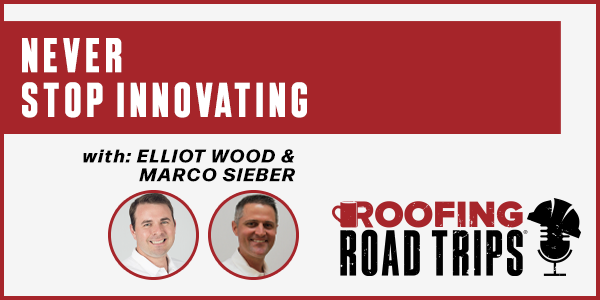
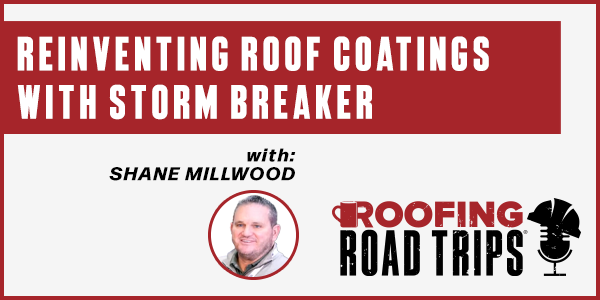
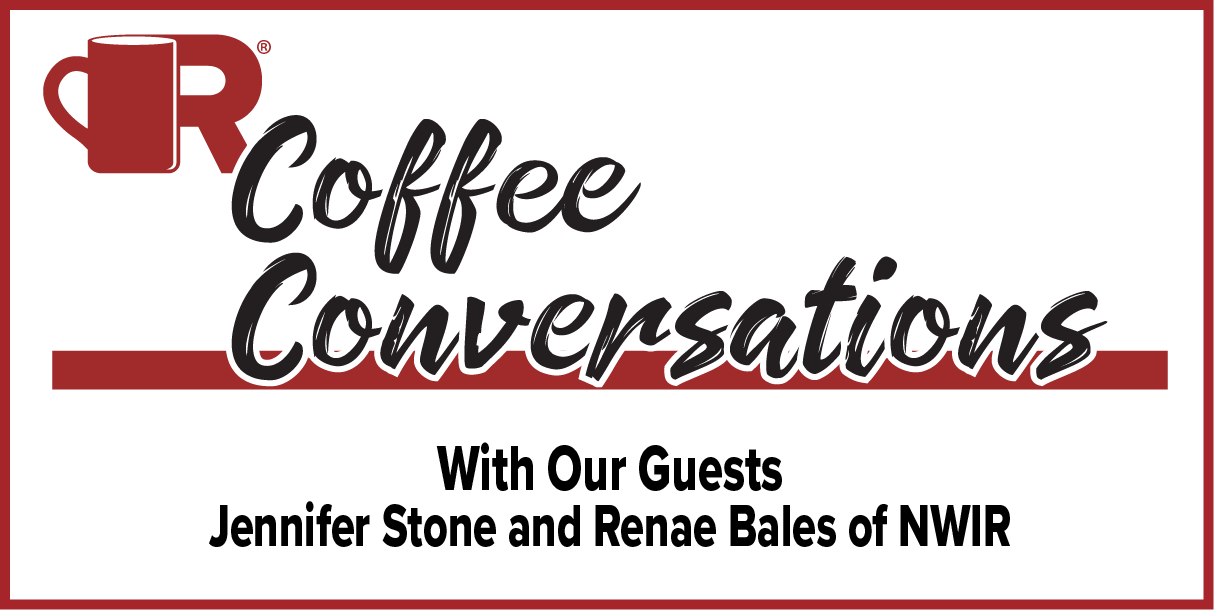
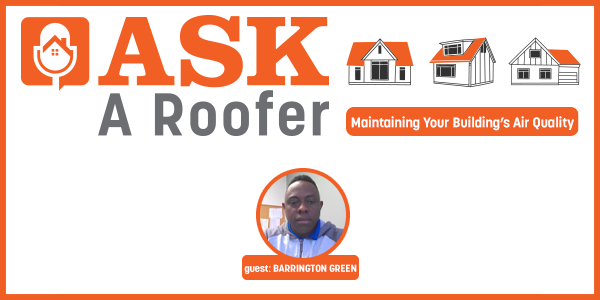

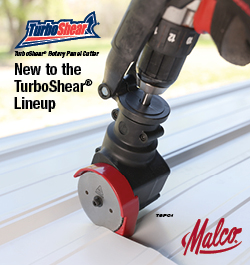

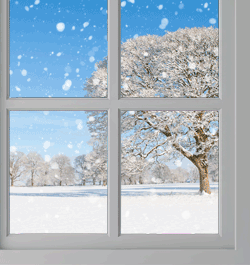
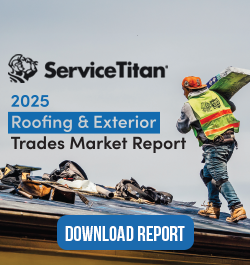
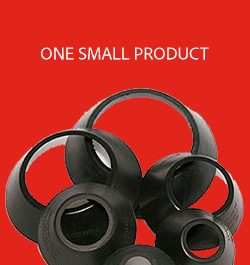
Comments
Leave a Reply
Have an account? Login to leave a comment!
Sign In